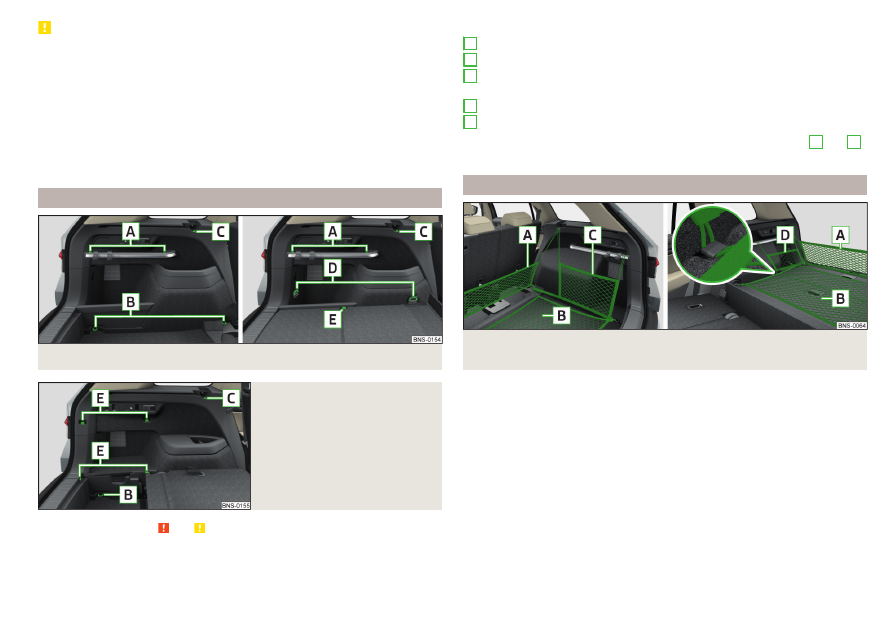Skoda Kodiaq (2019 year). Manual - part 7

CAUTION
■
Never exceed the maximum permissible load of the respective fasteners,
nets, hooks etc. - these could be damaged.
■
Make sure that the heating elements of the rear window heater, the ele-
ments of the integrated aerial in the rear window or in the rear side windows
are not damaged by abrasive items.
■
Do not place sharp objects in the nets and storage compartments in the lug-
gage compartment - there is a risk of damage to the net as well as the com-
partments.
■
Put the items in the storage compartments carefully and not load these
punctiform - there is a risk of damage to the compartments.
Fastening elements
Fig. 142 Fastening elements: Version 1/version 2
Fig. 143
Fastening elements: Variant 3
Read and observe and on page 108 first.
The fasteners are located on both sides of the luggage compartment.
Overview of the fastening elements
and
Mounting bar with integrated hooks for fixing fastening nets.
Lashing eyes for fastening cargo and securing nets
Fixing hooks of fastening systems in the trough of the foldable luggage
compartment cover
Lashing eyes for fastening cargo and securing nets
Hooks for securing fastening nets
The maximum permissible static load for the individual lashing eyes
B
and
D
is 350 kg.
Fixing nets
Fig. 144 Fastening examples for nets: Fastening examples for nets: five-
seat version/five-seat version with the variable loading floor
A
B
C
D
E
109
Transport of cargo